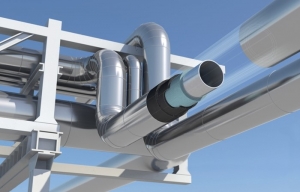Cryogenic Insulation
Cryogenic insulation is crucial for maintaining extremely low temperatures in systems handling substances like liquefied natural gas (LNG). It involves specialized materials designed to minimize heat transfer in environments below -150°C. While effective insulation is essential for energy conservation and preventing rapid boil-off of cryogenic fluids, it also presents unique challenges.
A significant risk in cryogenic insulation systems, particularly for LNG pipelines, is corrosion under insulation (CUI). This type of pipeline failure can be catastrophic for operators, resulting in not only the cost of replacing the insulation but also substantial operating losses that the LNG industry can ill afford. CUI can compromise the integrity of the pipeline, leading to potential leaks or ruptures.
Furthermore, the installation of cryogenic insulation is a time-consuming process, requiring specialized skills and techniques. This extended installation period translates to higher labor costs, adding to the overall expense of implementing and maintaining cryogenic insulation systems in LNG facilities.
Our Expertise
We offer a multilayer elastomeric system as an alternative to conventional rigid foam for low-temperature process pipework. This innovative foam combines multiple key performance qualities in a single material, eliminating the need for labor-intensive combinations of various materials typically used in cryogenic insulation. The foam boasts low thermal conductivity and light weight while maintaining flexibility at low temperatures. This flexibility allows the system to absorb vibrations and impact, resulting in a robust, low-maintenance solution for insulating cryogenic pipelines, vessels, and equipment. By integrating these properties into one material, our system simplify installation and enhance overall performance in cryogenic applications.

